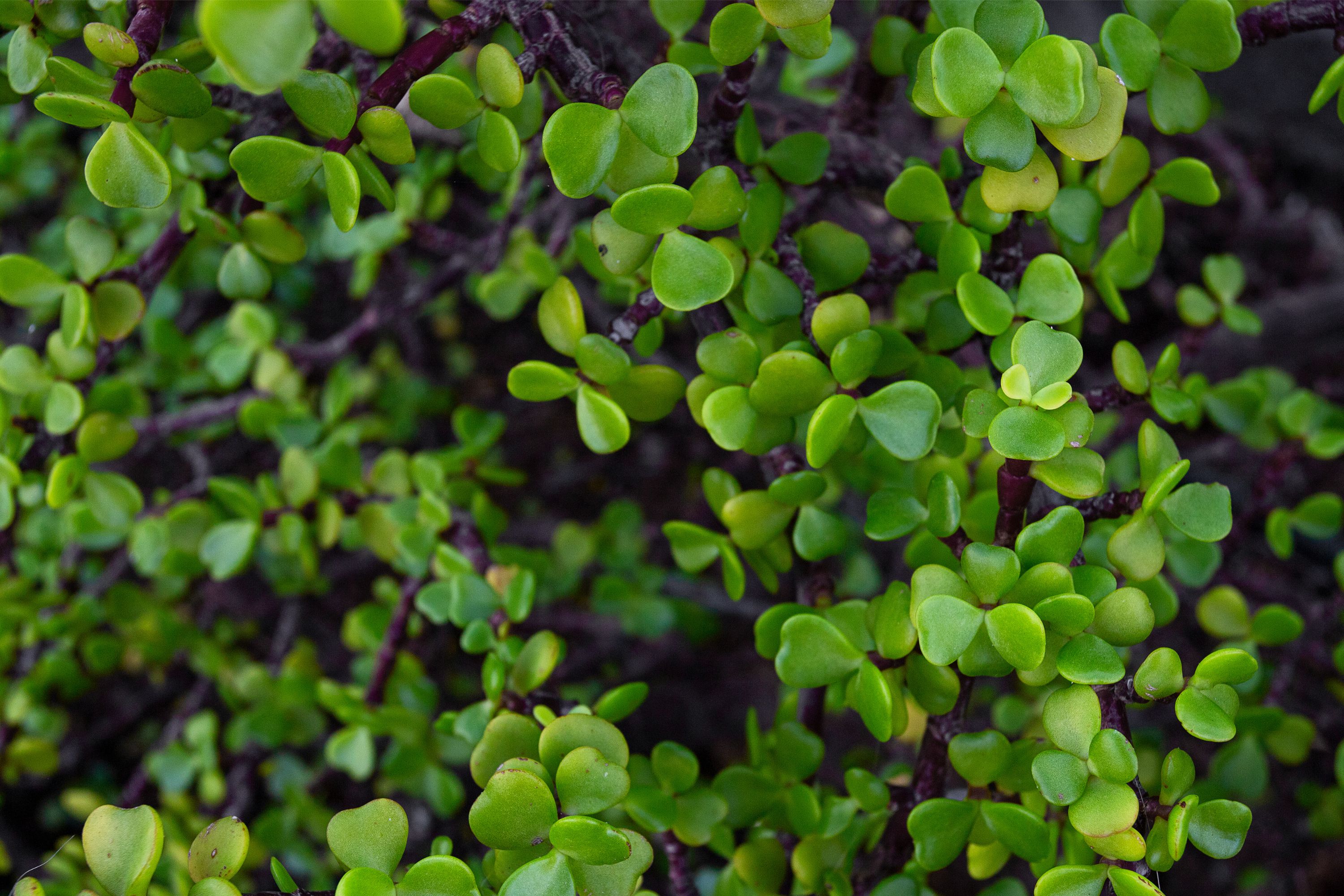Elephant bush
(Portulacaria afra)

Description
Portulacaria afra, commonly known as the Elephant Bush, Dwarf Jade Plant or Spekboom, is a succulent plant species that is native to South Africa. It belongs to the family Didiereaceae, which includes approximately 11 species of succulent shrubs and trees. Portulacaria afra is a highly adaptable and resilient plant, making it a popular choice for both indoor and outdoor cultivation. In this article, we will delve into the various aspects of Portulacaria afra, including its physical characteristics, habitat, care requirements, and uses. Physical Characteristics Portulacaria afra is a small, evergreen succulent shrub that can grow up to 15 feet (4.5 meters) tall, but is more commonly seen at a height of around 3 to 6 feet (0.9 to 1.8 meters) in cultivation. Its leaves are fleshy, round or oval-shaped, and can be up to 1 inch (2.5 cm) long and half an inch (1.3 cm) wide. The leaves are arranged opposite each other on the stem and are a vibrant green color, but can turn a reddish-brown color when exposed to sunlight or during periods of drought. The stem of the plant is thick and succulent, and can become quite woody with age. Portulacaria afra produces small, pink flowers in the summer, but they are not particularly showy and are often overlooked. The plant is primarily grown for its attractive foliage and easy-to-grow nature. Habitat Portulacaria afra is native to South Africa, where it is found growing in dry, rocky areas and scrublands. The plant is adapted to drought conditions and can survive on minimal water. In its native habitat, Portulacaria afra is an important source of food for elephants, which is how it earned its common name, Elephant Bush. Care Requirements Portulacaria afra is a relatively low-maintenance plant that is easy to grow and care for. It prefers bright, indirect light, but can tolerate some direct sunlight. When grown indoors, it should be placed near a sunny window or under artificial grow lights. When grown outdoors, it should be planted in a well-draining soil mix and placed in a location that receives partial to full sunlight. Watering Portulacaria afra is drought-tolerant and can go for long periods without water. It is important not to overwater this plant, as it is susceptible to root rot. When grown in containers, it should be allowed to dry out completely between waterings. When grown outdoors, it can be watered occasionally during periods of drought. Temperature and Humidity Portulacaria afra can tolerate a wide range of temperatures, from 30°F (-1°C) to 100°F (38°C). It prefers a dry, arid climate and does not require high humidity levels. Fertilization Portulacaria afra does not require regular fertilization, but can benefit from a light feeding once or twice a year during the growing season. A balanced, water-soluble fertilizer can be used at half strength. Propagation Portulacaria afra can be propagated from stem cuttings or by division. Stem cuttings should be taken in the spring or summer and allowed to callus over for a few days before being planted in a well-draining soil mix. The cuttings should be watered sparingly until they develop roots and begin to grow. Division should be done in the spring or summer by gently separating the plant at the roots and repotting each section into its own container. Uses Portulacaria afra has a variety of uses, including: Ornamental: Portulacaria afra is primarily grown as an ornamental plant due to its attractive foliage and easy-to-grow nature. It is commonly grown as a houseplant or in outdoor gardens as a low-maintenance landscaping plant. Bonsai: Due to its small size and adaptable nature, Portulacaria afra is a popular choice for bonsai cultivation. Food: In its native habitat, Portulacaria afra is an important source of food for elephants, as well as other herbivores. The plant is edible for humans as well, and is often used in traditional South African cuisine. Medicinal: Portulacaria afra has been used in traditional medicine to treat a variety of ailments, including hypertension, diabetes, and respiratory infections. Carbon sequestration: Portulacaria afra is a highly effective carbon sequestration plant, meaning it can absorb and store large amounts of carbon dioxide from the atmosphere. This makes it a valuable plant for combating climate change and reducing greenhouse gas emissions. In fact, some studies have suggested that planting Portulacaria afra in large quantities could help to mitigate the effects of climate change in certain regions.
Taxonomic tree:







